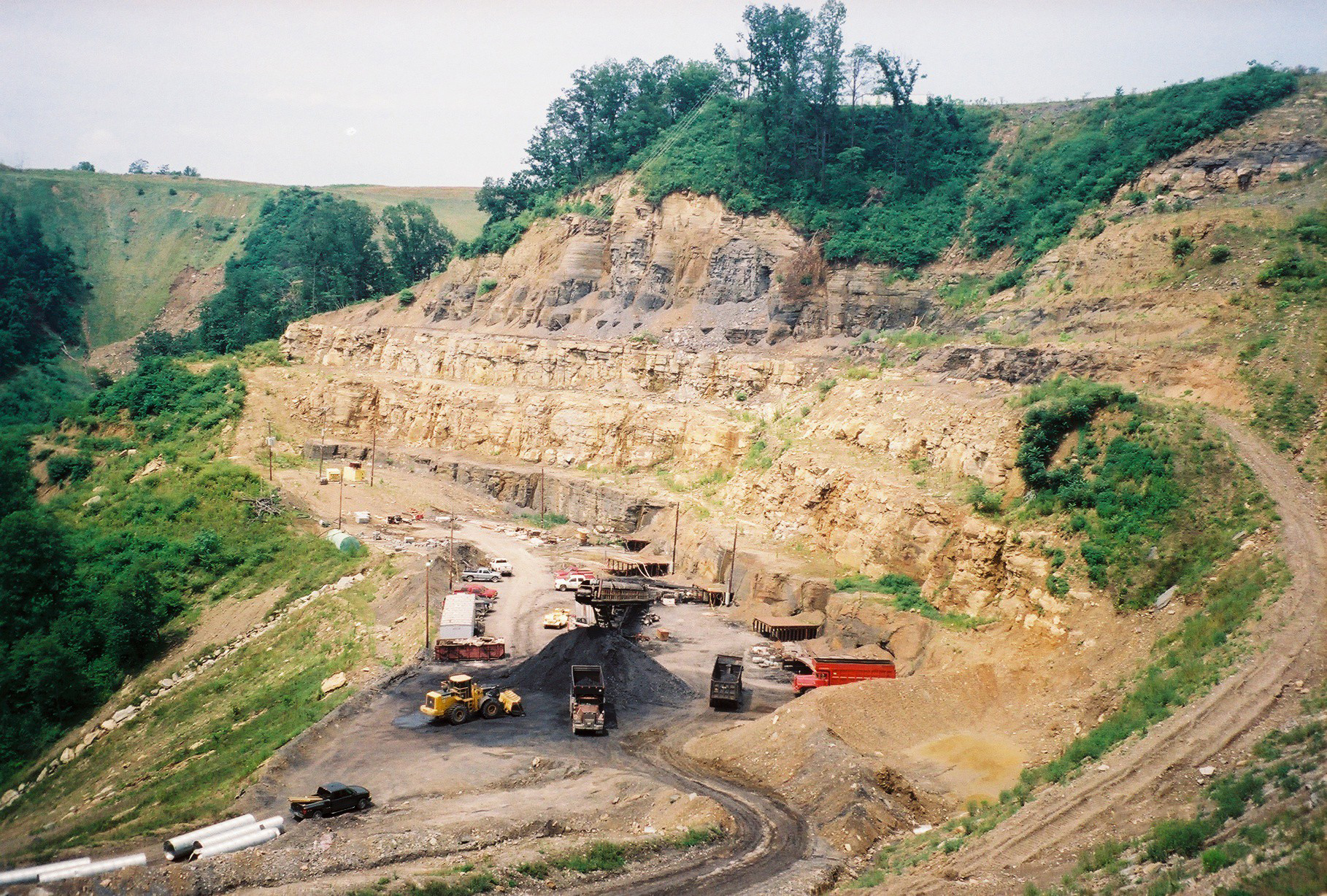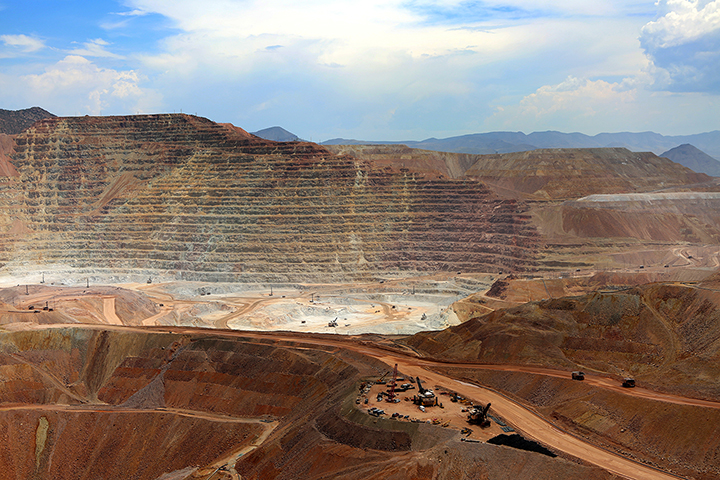Multi-Period Excess Earnings Method
The New and Improved Residual Technique of Reserve Valuation
By: Alan K. Stagg, PG, CMA
In the previous article – Standards of Value and Appraisal Techniques – reference was made to MPEEM, the Multi-Period Excess Earnings Method, which replaced the technique termed the Residual Technique of Reserve Valuation which historically was widely accepted. This article will provide the details of the MPEEM.
ABSTRACT
The residual technique of reserve valuation has been used for decades in valuing mineral reserves. Changes in financial reporting standards have led to a modification, known as the Multi-Period Excess Earnings Method. As with the residual technique, an operating model is constructed to forecast annual streams of revenue and expenses derived from the business enterprise associated with the reserves. The difference involves deducting not only the value of the contributory assets from the cash flow stream, but also an imputed return on the investment of these assets. The present value of the excess earnings is then attributed to the reserves. This article reviews the methodology used in the application of this approach and presents a complex appraisal that was conducted using this technique.
RESIDUAL TECHNIQUE OF RESERVE VALUATION
In using this Residual Technique of Reserve Valuation, a Business Enterprise Value was first established by constructing an operating model, forecasting the after-tax cash flows to be derived from the operation of the property, selecting an appropriate discount rate, and deriving the present value of these cash flows.
It should be noted that the use of after-tax cash flows yields a higher value than if after-tax profits were used. This is justified because mining properties typically are bought and sold based on values derived from cash flow analysis, thus satisfying the requirements of market value.
The logic of the use of the Residual Technique was as follows:
The value of a business enterprise is created from the collective use of a series of assets, each of which contributes to the viability of the enterprise. For the usual mining operation, the following categories of assets were typically employed: reserves; mining equipment; processing facilities; land and improvements; and working capital.
In some instances, sales contracts might have been present. These were typically valued only if the contract selling price was above the current market selling price, much as a leasehold estate is valued in real estate appraisal practice.
The application of the techique was as follows:
Business Enterprise Value
Less:
Value of Plant, Machinery, and Equipment
Value of Land and Improvements
Working Capital
To Yield:
Value of Reserves (Right to Mine)
The values of the various asset classes typically were developed as follows:
Plant, machinery, and equipment
Replacement value less depreciation was the standard of value most commonly used for this class of assets. This recognized that their contribution was the cost to replace them at the date of the valuation, less the percentage depreciation experienced by the existing assets.
Land and improvements
Market value was the standard of value most commonly used for land and improvements. It is important to include only the land and improvements that contribute to the enterprise, such as the surface on which processing facilities, shops, and offices reside; necessary buffer zones; and necessary easements and rights of way. Land that may be owned but that is incidental to the enterprise was not included.
Working capital
In establishing working capital, one of the most defensible methods was to select industry averages for enterprises of similar size as analogs, with working capital typically expressed as a percentage of annual revenues.
After subtracting the value of these asset classes from the Business Enterprise Value, the remaining, or residual, value is attributed to the reserves, for which the right to mine is owned by the operator.
MULTI-PERIOD EXCESS EARNINGS METHOD
In valuing business acquisitions for financial accounting purposes, the residual technique was typically used in allocating the purchase price to the various asset classes, with any excess value remaining above the value of the individual asset categories assigned to goodwill.
As this technique was refined, and with continued advances in financial report requirements, it was recognized that simply attributing the market value or value in-use of an asset class did not fully recognize the contribution it made to the value of the enterprise, in that it did not reflect the return on the investment in and use of that asset, but only the return of the investment. From this, the Multi-Period Excess Earnings Method evolved.
As with the Residual Technique, the Multi-Period Excess Earnings Method is a form of discounted cash flow analysis whereby an operating model is first constructed to forecast only the annual streams of revenue and expenses derived from the business enterprise associated with the asset being valued.
When other assets – working capital, fixed assets, intangible assets – are required to produce this cash flow, then portions of the total cash flow attributable to these contributory assets must be identified and deducted from the total cash flow. The remaining cash flow stream, or excess earnings, is attributable to the asset being valued. An appropriate discount rate is then selected and the present value of the excess earnings stream is derived to yield the fair value of the subject asset.
An example of the use of this approach is illustrated by an appraisal conducted by Stagg Resource Consultants, Inc. several years ago for the purpose of purchase price allocation. The appraisal involved a substantial coal producing company in the eastern United States with three primary opearating divisions that was forecast to produce as much as five million tons a year of primarily metallurgical coal.
The purpose of the appraisal was to provide opinions of the fair value as of the purchase date of the various asset classes in accordance with the following: FASB Statement of Accounting Standards No. 141 (R), Business Combinations; FASB Statement of Accounting Standards No. 142, Goodwill and Other Intangibles; and ASB Statement on Auditing Standards No. 101, Auditing Fair Value Measurements and Disclosures.
The intended use of the appraisal was to assist the purchaser and its accounting firm in the allocation of purchase price in the acquisition of the company and in the preparation of financial statements.
An important facet of this method is to consider not only the return of an investment but also the return on an investment in a given asset class.
The application of this technique is as follows:
COMPONENTS OF MPEEM
Less: Operating Costs
To Yield: EBITDA
Less: Depreciation, Depletion, and Amortization
To Yield: EBIT
Less: Interest Expense
To Yield: Net Taxable Income
Less: State and Federal Income Tax
To Yield: Net Profit After Taxes
Add: Depreciation, Depletion, and Amortization
To Yield: After-Tax Earnings
Less: Returns on Contributory Assets
To Yield: Excess Earnings Attributable to Reserves
In developing estimates of value, forecasts of revenues, operating costs, and expenses were prepared for the model life. These forecasts were then incorporated in the valuation model and forecasts of annual after-tax earnings were developed after adjusting for depletion, depreciation, and income taxes. The model was run on a nominal dollar basis, thus accounting for inflation.
The annual returns on contributing assets were then deducted from the after tax earnings to yield the excess earnings attributed to the reserves and resources. The excess earnings stream was then allocated to the various properties and tonnage classifications based on each component’s contribution on a year-by-year basis. Appropriate discount rates were determined and the present values of the forecast excess earnings streams were computed.
The derivation of the input in the valuation model, which was run for a 20-year period, is discussed by item below.
Reserves
As a part of the appraisal, an audit was conducted of the formal reserve reports that had been prepared for the purchaser. The total tonnage estimated was ultimately divided into the categories of reserves, measured and indicated resources, and inferred resources. The risk associated with the individual assurance classifications was incorporated in the valuation model.
Annual Sales and Selling Prices
Forecasts of annual sales and selling prices were developed based on discussions with representatives of the acquired company and with the purchaser, on research conducted into publicly available material, and on experience gained in projects conducted involving similar producers in the region. Forecasts of price increases were incorporated in the valuation model.
Operating Costs
The operating costs forecast in the valuation model were grouped into the following categories: cash costs; royalty expense; and asset retirement obligations.
Forecasts of cash costs included payroll, payroll taxes, benefits, repairs and maintenance, supplies, blasting, diesel and gasoline, contract mining, other services, processing and loading, contract hauling, other direct costs, mine overhead, sales and production taxes, equipment rental, and sales, general, and administrative expenses. Reviews of historic and forecast expenses, after accounting for changes in forecast sales levels and selling prices yielded forecasts of cash costs, denominated as current dollars per ton. Nominal escalation rates were used in the model to convert the forecast from current dollars to nominal dollars.
Royalty expenses were calculated using the royalty provisions of the various leases.
Asset retirement obligations, or mine closure costs, were initially provided by the acquired company’s management. Upon completion of reviews of these data, site visits were conducted, permit maps and related documents were reviewed with mine management, and revised forecasts were prepared when justified. Based on this work, a new forecast of asset retirement obligations were prepared, including estimates of closure costs for mines that were forecast to be opened but did not yet exist at the appraisal date.
Depreciation
Depreciation schedules for the fixed assets held at the appraisal date were prepared using the remaining useful lives estimated in the appraisals of the plant, machinery, and equipment that were conducted as part of the assignment and applying straight-line depreciation. Depreciation schedules for forecast capital expenditures were prepared on an annual basis assuming the average appropriate class lives of the assets would be seven years and using the straight-line method of depreciation.
Depletion Allowance
Two alternatives are available to the taxpayer – cost depletion and statutory depletion, with both considered in modeling. As allowed by tax law, the approach most favorable to the taxpayer was used.
Federal and State Income Taxes
Applicable state and federal tax rates were researched using the applicable State Tax Handbook and the U.S. Master Tax Guide published by CCH, Incorporated. These were then confirmed using various state and federal agency personnel or publications.
Returns on Contributing Assets
In addition to the reserves, the following assets were determined to contribute to the forecast earnings in the valuation model: working capital; land and improvements; plant, machinery, and equipment; infrastructure and development costs; regulatory permits; assembled workforce; and sales agreements.
The investment returns for each of these asset classes were determined as follows:
Working Capital
Assumptions regarding working capital were developed using data derived from Risk Management Associations’ Annual Statement Studies for the appropriate period, denominated as a percentage of annual sales. Annual changes in working capital were computed based on forecast changes in annual sales revenue and average annual asset balances were then calculated. To calculate the return on the investment in working capital, short-term borrowing rates, such as lines of credit through a commercial bank, were used. Because the value of working capital does not diminish over time and is available for use in another investment once the reserves and resources were depleted, a return of the investment in working capital was not applicable.
Land and Improvements
The overlying land contributing to the business enterprise was appraised by a certified real estate appraiser as of the appraisal date. To calculate the return on the investment in land and improvements, long-term mortgage rates were used and applied to the average land value balance annually in the model. Because the value of land typically does not decrease over time and is available for use or for sale once the reserves and resources are depleted, a return of the investment in land and improvements was not applicable.
Plant, Machinery, and Equipment
Existing preparation plants, machinery, and equipment were appraised independently by machinery and equipment appraisers. Additionally, forecasts of capital expenditures required to meet the sales forecasts were prepared by Stagg Resource Consultants and incorporated into the valuation model. Because these assets depreciated in value over time, a return of investment was applicable. This recoupment was accomplished using straight-line depreciation, as noted previously. Additionally, the return on the investment was calculated by applying a rate of return against the average annual asset balance. For this type of asset, the financing rate that a commercial bank would charge on a loan for these assets was used.
Infrastructure and Development Costs
The value of prior investments in infrastructure such as refuse impoundments, plant sites, mine face-ups, haul roads, and loadouts associated with the business enterprise were established by estimating current replacement costs and the original tonnage associated with each asset and prorating the costs by the tons remaining at the appraisal date. Because these investments depreciate in value as the associated tonnage is extracted, a return of the investment was applicable. The recoupment was accomplished by amortizing the fair value of each estimate over its estimated remaining life. Additionally, a return on the investment was calculated using an expected financing rate similar to a long-term mortgage rate.
Regulatory Permits
The value of existing regulatory permits at the appraisal date was determined by estimating current replacement costs and the original tonnage remaining at the appraisal date. Additionally, a forecast of anticipated costs to obtain additional permits for new mines was prepared and incorporated in the valuation model. Because these investments depreciate in value as the associated tonnage is extracted, a return of the investment was applicable. This recoupment was accomplished amortizing the fair value of each permit over its estimated remaining life. Additionally, a return on investment was calculated using the discount rate developed for the business enterprise in the valuation model and applied to the average annual investment balance. The use of the discount rate was based on the fact that intangible assets such as permits are typically financed through the operation’s cash flow.
Assembled Workforce
At the appraisal date, the business enterprise associated with coal reserves had a workforce comprised of several hundred employees that were specialized, trained, and competent. Considerable expenditures for recruiting, selecting, and training would be required to replace these employees with individuals of comparable skill and expertise. The value of the assembled workforce is thus represented by the avoided assemblage cost and the cost approach is the most appropriate approach in valuing this asset. Although financial accounting standards prohibit the recognition of the assembled workforce as an intangible asset apart from goodwill, the assembled workforce is a contributory asset to the business enterprise and its fair value was used to calculate a return on investment to be deducted from the earnings stream in the MPEEM calculation of the reserve value.
Research into recruiting, selection, and training costs was conducted and the results were expressed as percentages of the average salary for each employee class. Estimates of the fully-burdened average annual salaries of the various employee classes were prepared and the appropriate percentage factors used to establish the replacement cost of the workforce. Taxes were then deducted and an amortization benefit was then applied, which reflects the additional value accruing to the asset brought about by the ability to deduct the amortization benefit from the avoided cost of assembling the workforce yielded the fair value of the assembled workforce. The return on the assembled workforce was calculated by applying the discount rate used in the valuation model to the fair value.
Sales Agreements
A number of the sales agreements held by the acquired company had prices above prevailing market prices and thus had value. The income approach was used to establish the fair value of these agreements based on the differential between the prevailing market price and the prices in the agreement, taking into account the forecast annual sales under these agreements and their remaining life. Because the value of these agreements will decrease as the contracted tons are paid for and delivered, a return of investment was applicable. The return was apportioned among the appropriate years for each agreement. The return on the investment was calculated using the discount rate used in the valuation model, because such agreements are typically financed through the operation’s cash flow.
Discount Rate
In establishing a discount rate, the weighted average cost of capital approach was used.
Terminal Value
A terminal value was assigned to the operation so as to recognize the value of the reserve remaining after the 20-year term of the valuation model. This terminal value was developed by assuming that the excess earnings attributable to the reserves in the last year of the valuation model, after adjusting for the remaining asset retirement obligations, would continue until the reserves were depleted. The terminal value was then allocated to the various properties and tonnage classifications according to the proportional amount of coal reserves remaining. The present values of the allocated terminal values were then established using the discount rate used in the valuation model.
As can be seen, the use of this approach requires a considerable amount of detailed investigation and analysis, and the appraiser is well-advised to ensure in advance that the client understands the time and cost that will be involved in completing a defensible appraisal. The true test typically lies in the results of the detailed reviews by the client’s audit firm.






